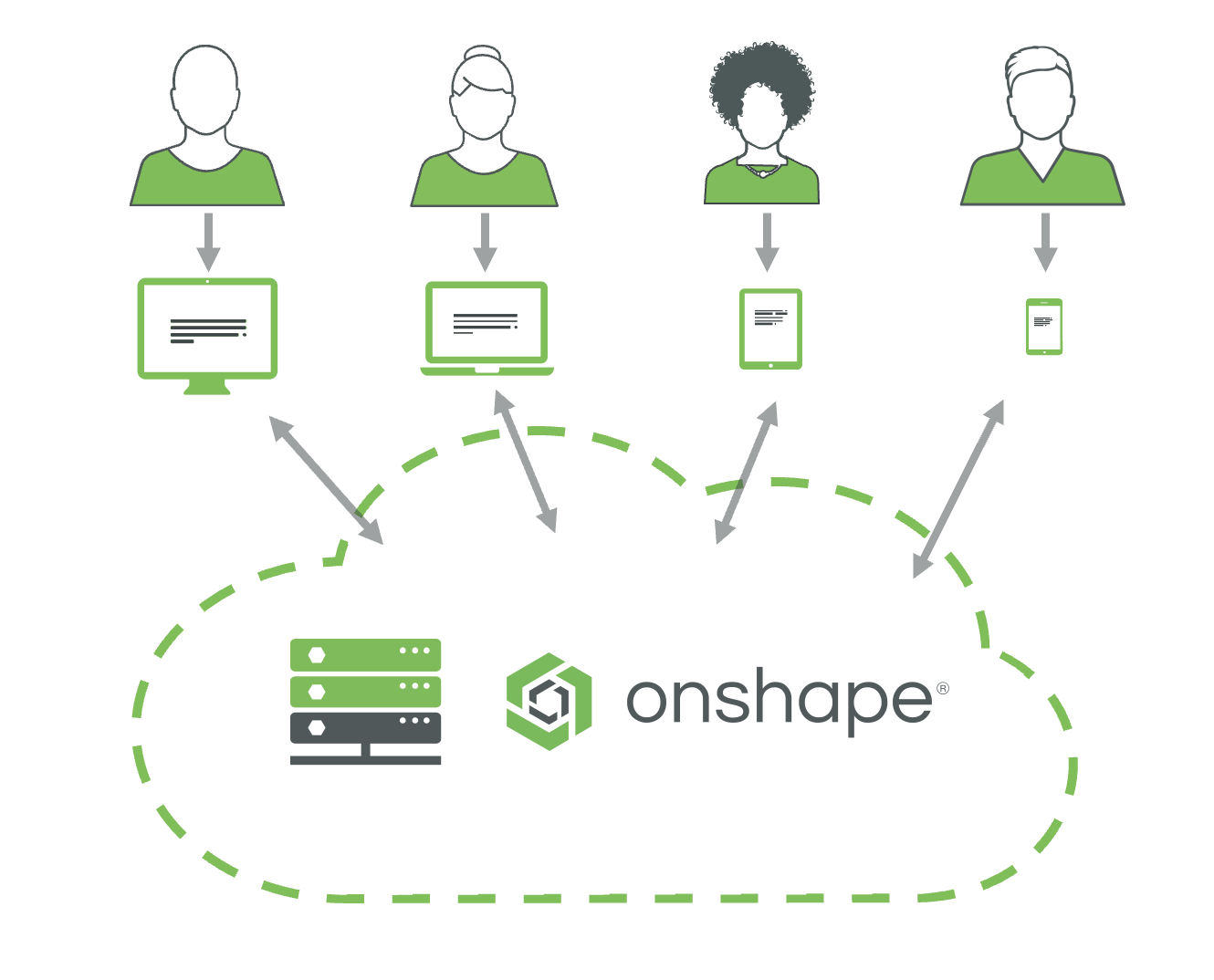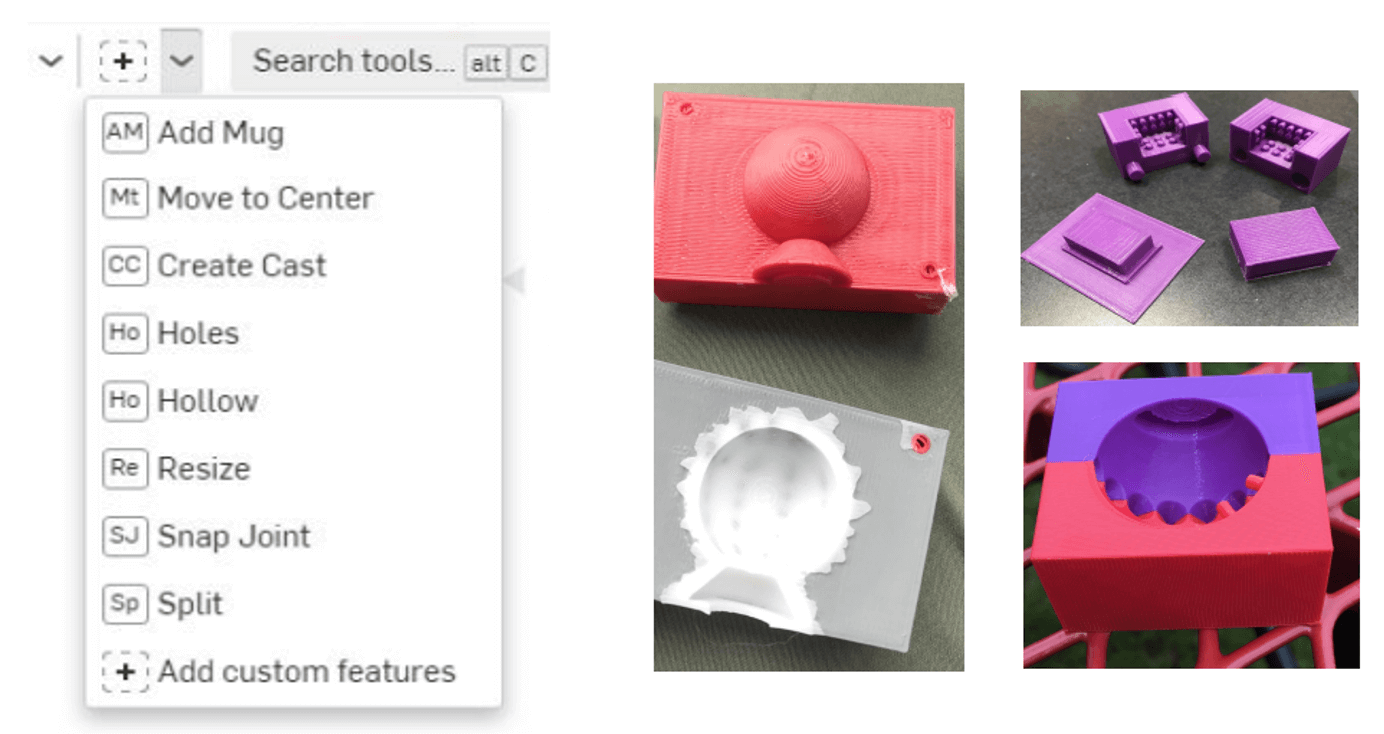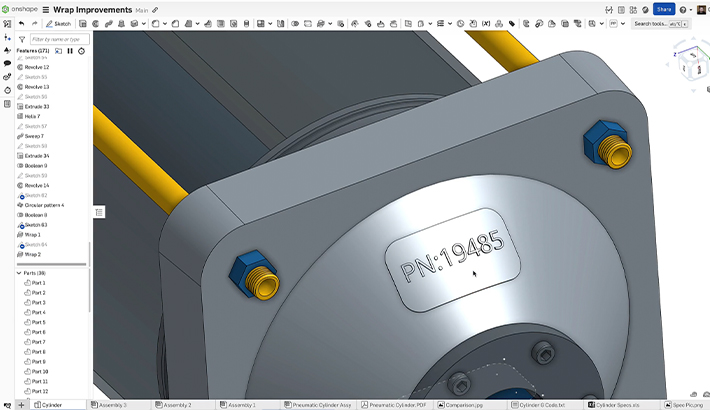Onshape is, first and foremost, a professional product development platform. Companies all over the world are using Onshape and the agile workflows it enables to create the next generation of products in markets ranging from robotics to transportation to fashion.
In addition to enabling companies to revolutionize their product development processes, Onshape’s unique cloud-native architecture is providing educators and researchers with tools and capabilities that were never before possible.
Much More Than CAD in the Cloud
Let’s start with what makes Onshape different.
Computer-assisted design (CAD) software has been central to engineering and product design for decades. Traditional CAD platforms were on-premises, meaning that each engineer or designer had their own copy of the software installed on their workstation. Collaboration was cumbersome because CAD files were stored locally, on individual workstations.
The advent of the internet sped things up (a little). Engineers could check their files into product data management (PDM) servers and their collaborators could check them back out. But, the check-in and check-out process still created a stilted and serialized product development process, with files being largely responsible for the bottleneck.
Onshape is completely different. Onshape was designed from the ground up to be cloud-native. No files and no installations. This revolutionary architecture brings with it a whole host of advantages. Without files, collaboration isn’t just simplified, it becomes inherent in every design process. Any number of designers can access the same model at any time from any device.

Perhaps most importantly, being cloud-native, Onshape is infinitely extensible. Rather than being a closed system installed on your computer, it is better to think of Onshape as an open platform, intended to be modified, added onto, and connected to other cloud-based systems. Traditionally, design ideas were bounded and constrained by the capabilities of the chosen CAD program. With Onshape, the opposite is true; rather than being a hurdle or impediment, Onshape is a design accelerator.
CAD Software that Enables New Possibilities
The Onshape team made a few key decisions when starting to build the platform that solved problems posed by traditional CAD systems while enabling a number of possibilities for academic research and innovative teaching.
The first is FeatureScript, a brand-new programming language for creating parametric features and 3D geometry in the cloud. In the past, users might be able to view copies of models in a web browser or on a mobile device, but they couldn’t edit the model because of the heavy computational requirements of CAD. Users could create macros to execute a series of commands for them, but they couldn’t design their own parametric feature. FeatureScript and Onshape’s architecture allow users to edit models from any device while giving them the ability to create their own parametric features to automate and customize common workflows.
The next is the REST API, a standard protocol used by web applications that allow developers to access Onshape’s modeling server and database in real time. In the past, users would have to manually handle their CAD files if they wanted to analyze their models or integrate with their Project Management or Product Lifecycle Management systems. All apps in the Onshape App Store use the REST API to automate tasks like importing or exporting models, analyzing geometry, or managing data for parts and bill of materials.
Being cloud-native with simultaneous collaboration capabilities means having an append-only database, which means tracking all changes each user makes over time. In the past, once the CAD files were checked into the PDM system, there was no way of tracking which engineers were working on certain parts of the design, or auditing the security of your intellectual property. Onshape Analytics, available to all Onshape Enterprise accounts, allows you to quickly check stats with customizable dashboards or export full logs of every action committed by your design team to better understand and optimize how design teams work and students learn.
Educational CAD that Can Amplify Academic Research
Researchers from various disciplines are leveraging these technologies to generate new knowledge and push their fields in new directions.
A great example of how FeatureScript is being used to computationally drive geometric parameters comes from Agua Clara, a nonprofit founded at Cornell University that now holds courses at The Ohio State University and New Jersey Institute of Technology.
The Agua Clara team uses FeatureScript to generate designs for gravity-powered water treatment facilities and promote “global access to safe drinking water through research and education”. Agua Clara’s Custom Features take input parameters like flow rate and minimum temperature to generate complex, open-source designs and allow professors to teach the principles of fluid dynamics in an applied and useful way.

An example of how researchers are leveraging the REST API for research is shape optimization. In a collaboration with SimScale, a cloud-native simulation platform, ESTECO was able to use the REST API with a centrifugal pump designed in Onshape to iteratively export the design with certain parameters and simulate the performance, efficiently optimizing the geometry for a desired application.
“I was able to cut my workflow from a very manual process on the order of hours, to an automated (and rerunnable) process of minutes. This lowers the cost of performing studies significantly and has vastly improved the fidelity of my investigations.”
- Daniel Revier, Ph.D. candidate in computer science at University of Washington
Researchers have also been able to leverage Onshape Enterprise Analytics to better understand how student teams work together on projects. In a paper called “All’s not Fair in CAD: An Investigation of Equity of Contributions to Collaborative Cloud-based Design Projects”, researchers from the University of Toronto and Technion Israel Institute of Technology analyzed the actions of each member of three teams.
Their findings showed that each team had one “CAD Guy” who contributed many more actions than the other two team members. Even more interesting, that “CAD Guy” was the only one on any team who spent a meaningful portion of their actions deleting things in Onshape, potentially pointing to ownership over the designs not felt by the other team members.
Innovative Teaching Unlocked by Cloud-Native CAD
Onshape’s unique cloud-native architecture is also enabling some exciting new teaching methods and learning opportunities. One important example is unifying disciplines, such as CAD and coding, often taught separately in STEM, robotics, and engineering classrooms. With FeatureScript, students of any experience level can learn coding right in Onshape, and blend their coding and educational CAD lessons.
Onshape includes a powerful Integrated Development Environment (IDE). Students can begin by simply creating variables and printing them to the screen. More advanced students can write functions and loops and create complex solid geometry using FeatureScript. Once students realize the power of FeatureScript to create Custom Features, the modeling possibilities are endless.
Custom Features can also be leveraged in the classroom to create demonstrations or simulations specific to a particular subject. For example, a physics class might be investigating pulley systems and mechanical advantage.
A simple Custom Feature, coupled with a custom table, might allow students to experiment with various parameters in a 3D pulley model, collect data, and draw conclusions. From the same CAD model, they could then fabricate the parts to demonstrate their learning in real life.
A compelling example of using Custom Features in the classroom comes from a computational fabrication class at Boston University, where students were given an open-ended project prompt: “Develop an algorithm for producing a physical product.”
One group’s solution was to create a series of Onshape Custom Features to walk a user through the design and fabrication process of a custom tea infuser. The Custom Features, all written by the students, placed a tea mug into the Onshape design workspace, then allowed the user to create their own unique model to cast a silicone tea infuser.
A whimsical, yet powerful example of how Onshape can speed up and open up design processes.

Every teacher has unique needs, based on their content area and the makeup of the students in their class.
Onshape is uniquely suited to flex and adapt to just about any educational setting. Robotics teams can create custom apps to facilitate their modeling and design phases. Engineering students can use the Onshape REST API to experiment with kinematic chains. And any student can speed up the process through which they turn their ideas into reality.
Get Started with Onshape Education
Onshape for education brings CAD out of the computer lab and into the modern era.














